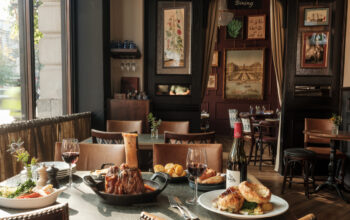Health and safety responsibilities of public venues

We are truly fortunate in the UK to have access to a large variety of excellent public venues. From the Royal Albert Hall to Wembley Arena and the untold numbers of restaurants and pubs scattered across the country, there is a meeting place for just about every kind of activity. With each venue comes certain health and safety responsibilities.
Both event organisers and property owners have a duty of care to staff members and those who attend the events on their premises. That duty of care includes specific responsibilities as outlined by the Health and Safety Executive (HSE). In many regards, health and safety at public venues is no different from health and safety in the workplace.
The thing to remember about maintaining a healthy and safe environment is that it doesn’t have to be complicated. The HSE provides plenty of helpful information – including easy-to-understand guides – outlining the obligations and responsibilities of event organisers and property owners.
Venue suitability
Maintaining health and safety in a public venue starts with assessing the suitability of that venue. An event organizer would ask him or herself what kinds of events the venue really is suitable for. Answering the question would mean looking at a variety of factors, beginning with capacity.
A venue’s capacity tells the event organizer how many people can safely be accommodated. He considers both seating and standing capacity. He considers whether or not there is enough room for people to move around and, if necessary, escape quickly.
Next up is access. The law requires public venues to be accessible to people with disabilities whenever reasonably possible. Does the venue have the means to access multiple floors? Are doors and corridors wide enough to accommodate wheelchairs and pushchairs? Are there emergency exits for those in designated disability areas?
Other considerations include the general proximity of facilities – like hospitals, public transport, etc. – and any potential hazards existing on-site. The presence of overhead power lines is a good example. Could they be a safety concern for certain types of events?
The risk assessment
With a good idea of venue suitability, a risk assessment can be carried out. The assessment would be carried out by a designated ‘responsible person’ who knows what to look for. It is not all that different from carrying out a risk assessment in the workplace.
The responsible person can address the various aspects of the risk assessment with a 1 to 5 rating system. Negligible risks would be at the low end of the scale while serious risks would be at the high end. A comprehensive assessment would include looking at:
- tripping hazards
- weather hazards
- environmental hazards
- fire risks
- catering risks
- child safety
- crowd control
- first aid capabilities
- work injuries.
The responsible person conducting the risk assessment writes down all identified risks along with their numerical grade. The information will be later used to create an emergency plan. In the meantime, the person can also be thinking about potential solutions.
For example, certain kinds of venues are such that commercial fire suppression systems cannot be utilised. An outdoor concert venue would be a good example. In such a case, an appropriate solution for an identified fire risk might be commercial fire extinguishers for large events.
Often times, implementing health and safety at a public venue requires little more than taking the information from the risk assessment and applying some common-sense solutions. Tripping hazards can be moved; equipment hazards can be cordoned off. Little things here and there can make a big difference.
Creating an emergency plan
One of the purposes of conducting a risk assessment is to gather the information necessary to create an emergency plan. As its name suggests, this plan dictates how event organisers and property owners will respond in the event of an emergency.
In this respect, what the HSE requires of venue operators differs from what is normally required of employers. Event organisers are required to test and validate their emergency plans to verify they will actually work. Tests are typically conducted through tabletop exercises that force staff to work through a variety of scenarios. Any weaknesses in team member response can be identified and corrected through such exercises.
Never compromise health and safety
We Brits are sociable people. We love to get out and about to do things together. Sometimes that means gathering to enjoy a football match. Other times it is about taking in a great concert or a multi-day festival. Sometimes it’s as simple as enjoying dinner with friends at a fine restaurant.
Regardless of what a social gathering looks like, patrons and staff members alike have a reasonable expectation of health and safety in public venues. Event organisers and property owners have no excuse to not provide a healthy and safe environment. There is never an excuse for compromising on this issue. If you need help with your venue, contact the HSE. They can get you pointed in the right direction.
The editorial unit























Facebook
Twitter
Instagram
YouTube
RSS